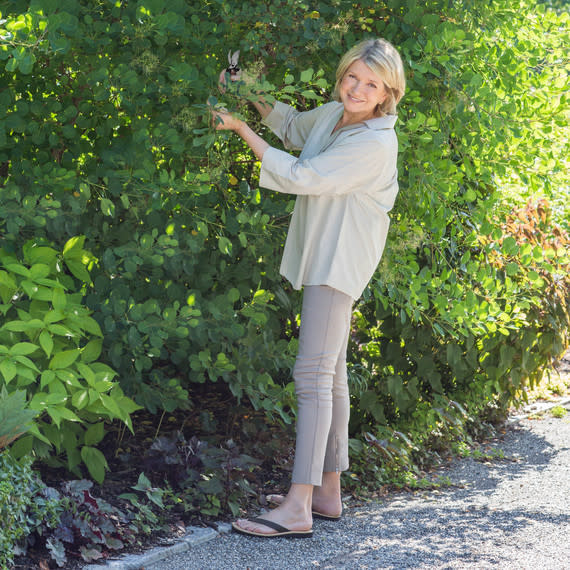Here's What's New in Martha's Garden This Spring

Believe it or not, spring is right around the corner. And while we're starting to tackle our lists of garden chores and prepping our outdoor space for the warm season ahead, it's always fun and inspiring to see what Martha and her team are working on in her Bedford garden. We can expect thousands of floral favorites—25,000 spring bulbs, to be exact—like daffodils, lilies, and peonies to make their annual returns, but there's always something extra special budding.
"This spring, we're hoping to finally plant a lot of the trees that we've potted in past years into their permanent homes," Ryan McCallister, Martha's gardener, tells us. We're not talking about a handful of maple trees either: "There are thousands of trees we're preparing to plant in dozens of varieties—from American witch-hazel and Rhododendron to American hornbeam and sweetgum. Currently, we're preparing by cleaning up the woodlands, while everything is still asleep. Depending on the weather, planting could happen as early as March or as late as April."
Related: 10 Eco-Friendly Ways to Care for Your Backyard
Delivered from nurseries including Broken Arrow Nursery in Hamden, Connecticut and Musser Forests, Inc. in Pennsylvania, hundreds of these trees first arrived at Martha's Bedford farm as container seedlings and bare-root tree cuttings. The latter, dug from the ground while still dormant, had to be quickly planted into nutrient-rich soil once received by the gardening crew. After being carefully potted and labeled, these little trees were tended to with care. McCallister says they've been hoping to transplant them for a few seasons, and this year may finally be the one. "Right now, all the beds are still frozen. But come spring, planting will be going full throttle and planting the trees will be our first priority."
Until then, the gardening team will continue with the project they've been doing most of January: mulching and preparing the rest of the garden beds. This, McCallister says, you can—and should—only do when the plants are sleeping. "We cover all the beds with the compost we make here on the property so they're in good shape. We've been able to spend extra weeks mulching since we didn't have any snow on the ground yet."
RELATED: Martha Shows How to Transplant a Tree
Another major task the team will tackle is moving around a handful of Martha's gardens. "Lots of the plants have been here for many years and grown well, but some of them are starting to grow too close to each other," McCallister explains. "We want to give them a bit more space, but also refresh things aesthetically. There's a lot Martha would like to move, maybe four or five of the gardens. But if we get even two of them moved, that'll be a huge achievement."
Inspired to start gearing up your garden's spring blooms? McCallister shares this tip for any home gardener: "Focus on your soil. Make sure it's properly prepped and add lots of compost. Most people focus on what flowers they're going to plant first, but no matter how pretty the flowers you pick are, nothing will thrive if you have poor soil."
(function(d, s, id) { if (d.getElementById(id)) return; var js = d.createElement(s); js.id = id; js.src = '//cdn4.wibbitz.com/static.js'; d.getElementsByTagName('body')[0].appendChild(js); }(document, 'script', 'wibbitz-static-embed'));
